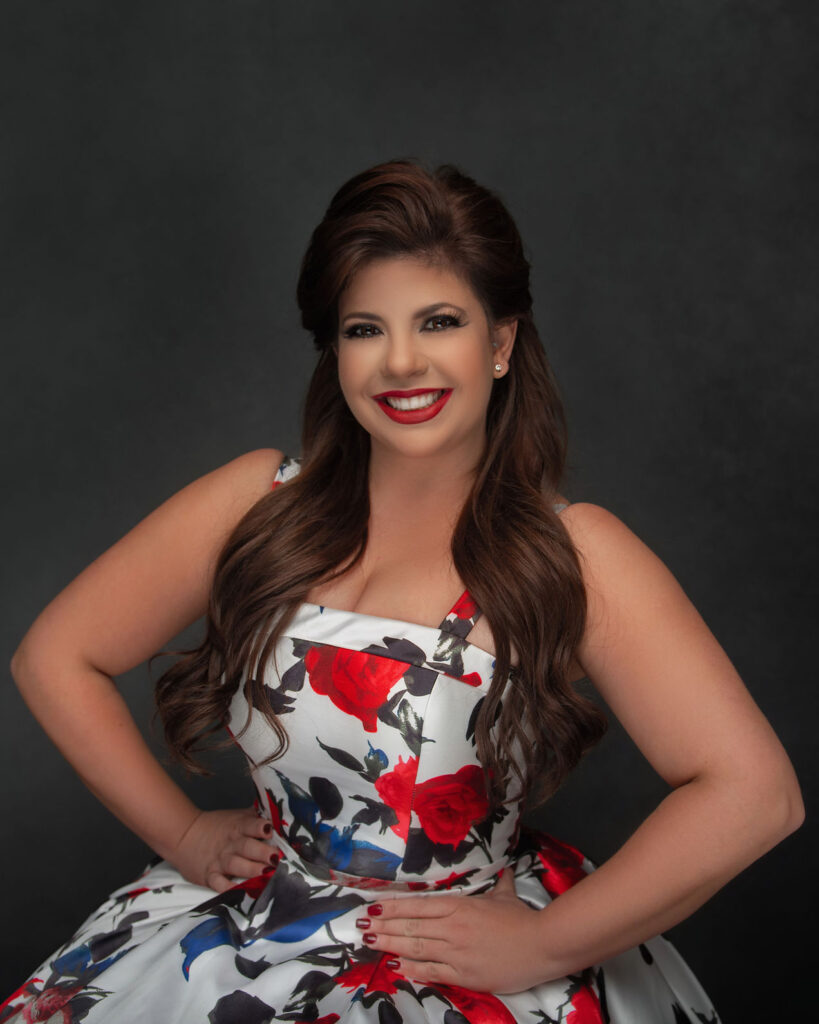A brilliant guest soprano sparks Modus Operandi Orchestra

However the Modus Operandi Orchestra got its name — something about merging the names of two previous organizations — there didn’t seem to be any criminal activity afoot in their concert of Mozart and Beethoven Saturday night at St. Mary Catholic Church in Long Island City.
Led by their founder and music director Justin Bischof, they didn’t rob the long notes in the Andante of Beethoven’s Seventh Symphony, as many orchestras do. There was no coverup of the voice of soprano Laura León, which gleamed over the sensitive accompaniment in two Mozart selections. And there was nothing fraudulent about León’s high-flying coloratura — it was the breathtaking real deal.
It did seem, in the first two selections—Beethoven’s Coriolan Overture and Mozart’s Symphony No. 35 (“Haffner”) — that conductor Bischof’s m.o. was just to give the cue and hope. Crisp, focused execution seemed hard to come by. Beethoven’s tragic scenes and Mozart’s festive exuberance lost impact as a result.
The key word in this orchestra’s description of itself was “opportunity,” as in young professionals getting post-conservatory experience performing the symphonic repertoire before they (hopefully) go on “to perform with major ensembles.” In other words, developing an m.o. for orchestral playing that will attract the attention of audiences, not the music police.
Those major ensembles achieve excellence through a mysterious alchemy of following the leader and listening to each other. On Saturday, in the early going, the players didn’t sound quite ready for prime time. One could tell that Bischof had instilled in them an understanding of Coriolan’s dramatic arc, but they didn’t pull together enough to make it really happen.
They performed the “Haffner” with enthusiasm and impressive technical chops (especially the fleet strings in the finale), and made the most of Mozart’s contrasts between forte and piano dynamics throughout the piece. The first movement’s modulating development section was lifted by a rhythmic bounce, something the entire performance could have used more of. But again, the ensemble was often not together enough to bring the picture into focus.
All that changed with the arrival of soprano León, who sounded very ready for prime time with her clear voice in all registers, pinpoint intonation, sensitive phrasing, rapid articulation in Mozart’s long melismas and, to literally top it all off, sparkling and accurate coloratura technique.
In the solo cantata Exsultate, jubilate, León sang expressively, with minimal vibrato and attacks ranging from soft to crisp, but always right on pitch. The virtuosic closing “Alleluia” gave a taste of vocal glories to come in “No che non sei capace,” a protest aria Mozart composed for insertion in another composer’s opera. The opera overall was a flop, but Mozart reported that this aria di bravura “had to be repeated.”
León’s performance made it clear why. Saturday’s audience stood and applauded lustily, with no need for a repeat, as the singer’s blazing scales and sky-high staccato wouldn’t soon be forgotten. (Not surprisingly, the role of Mozart’s Queen of the Night figures prominently in León’s résumé.)
One often sees a strong soloist lifting an orchestra’s game in a concerto. But can one brilliant performance turn an entire evening around? For whatever reason, after León‘s star turn Bischof and his players gave a performance of Beethoven’s Seventh that was far more compelling than their earlier efforts with Coriolan and the “Haffner.”
From the lift of the rising scales in the Poco sostenuto introduction to the glow of the woodwinds (led by Mira Magrill’s sprightly flute) as the Vivace got under way, one sensed an energy and togetherness not previously heard. As Bischof kept the ship on a steady course, horns and brass sounded bright and in balance, and Andy Blanco’s timpani were a forceful but not intrusive presence.
Low strings introduced the pulsing Allegretto theme softly but in an inexorable rhythm, and conductor Bischof stepped up the movement’s crescendo over many pages to a broad forte. Creamy woodwinds offered mellow contrast in the hymn-like second theme.
Performances of this symphony commonly take a swinging tempo for the third movement, then go hell-for-leather in the finale. Bischof, scrupulously observing Beethoven’s tempo indications and metronome markings, turned the tables on that scenario, taking the Presto at a blistering 136 to the dotted half note and broadening to half note = 72 for the Allegro con brio.
At those tempos, the scherzo was the mad dash Beethoven apparently intended, and didn’t overstay its welcome despite going around the track twice with its alternating sections. The finale still had plenty of brio, but also substance, and one could actually hear the swirls of 16th notes in the violins. Maintaining the momentum throughout and managing the climaxes astutely, Bischof steered the symphony to its sudden and exhilarating finish.
Whatever m.o. produced this stirring performance, one hopes Bischof and his players use it again in their subsequent concerts.
The Modus Operandi Orchestra conducted by Justin Bischof, with organist David Enlow, will perform a world premiere by Bischof and music by Samuel Barber, 7:30 p.m. July 6 at Rye Presbyterian Church, Rye, N.Y. moonyc.org






